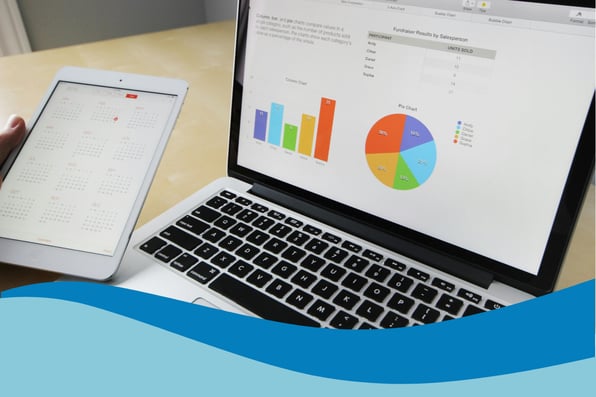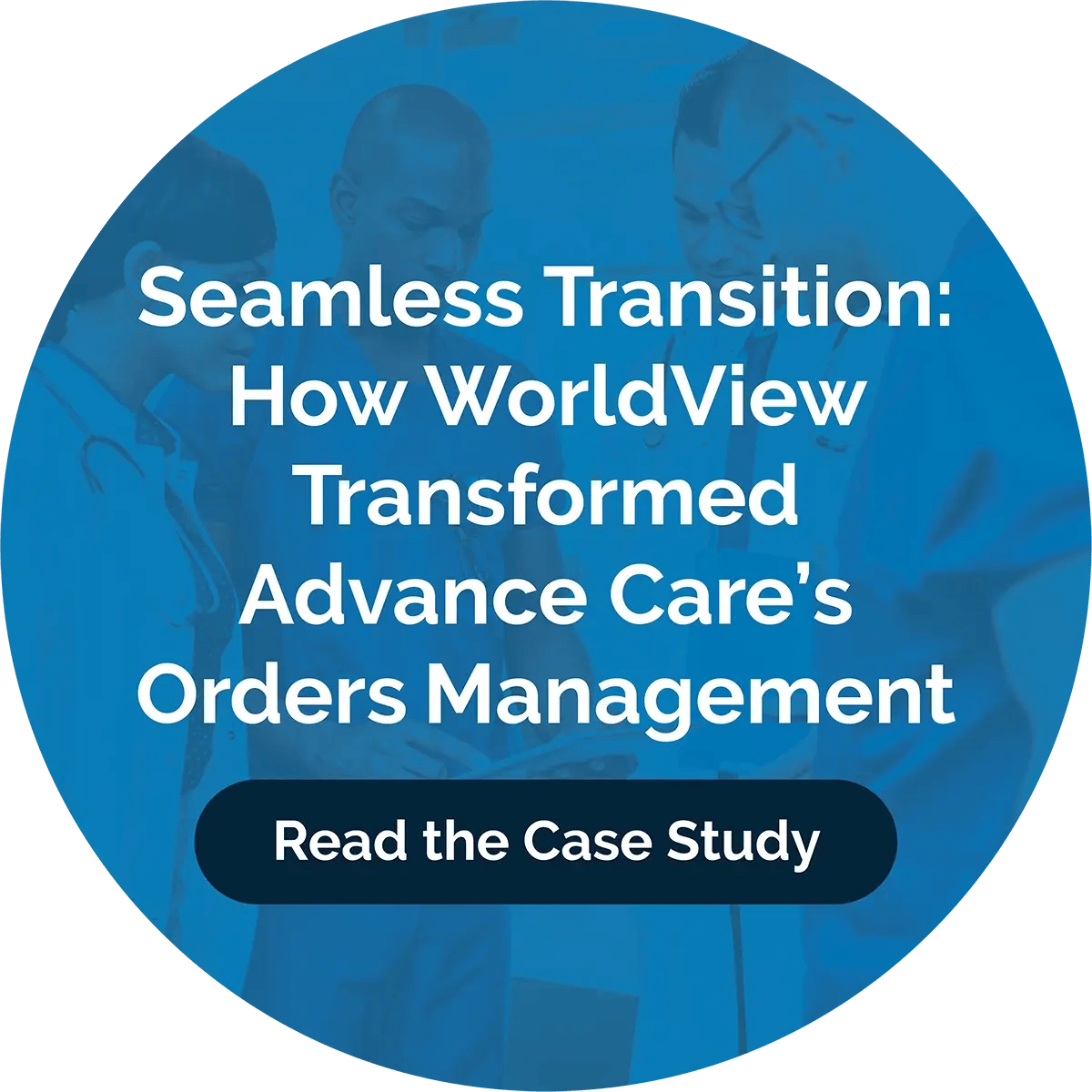Data-Driven Decision Making in Hospice Care

The digital revolution has transformed healthcare. Electronic patient records and other software have made it easy to collect and analyze data to improve procedures, enhance patient treatments, and reduce costs. You no longer need to spend hours poring over past patient records to find the right treatment for a patient. Instead, you can instantly enter your patient’s symptoms and find potential diagnoses, which lets you start treating them right away.
Access to hospice data helps you assess each patient and start customizing their care plan. Using technology like WorldView’s hospice solutions helps you track and submit referrals and effectively analyze patient conditions prior to intake so you can develop effective care plans immediately.
Why Data-Driven Decision Making Matters in Hospice Care
Time is often of the essence in hospice care. Patients dealing with end-of-life conditions can turn on a dime, and it’s important to be prepared. You and your team can use data analytics to monitor patient conditions and adjust pain control and other palliative measures as needed.
Your caregivers can assess symptoms and other documentation to personalize care plans and help patients feel more comfortable.
Data analytics also let you assess your operational practices and procedures to improve your efficiency. You can evaluate wait times, resource allocation, and other metrics to identify potential bottlenecks. Making your operational procedures more efficient improves patient care and can help you cut costs. Use technology to automate referral tracking, scheduling, medication reminders, and other tasks.
The Role of Data Analytics in Hospice Care
You can use data analytics to improve many facets of your hospice agency. Tracking patient symptoms, treatments, and outcomes helps you develop effective care plans for future patients. Data also helps you assess your operations and make them more efficient.
Common key metrics tracked in hospice agencies include:
- Number of patient admissions
- Length of stay
- Caregiver workloads
- Resource utilization
When you understand your volume, you can schedule caregivers accordingly and keep them from becoming burned out from high workloads.
Once you’ve been tracking data for a while, you can identify patterns and better prepare based on patient trends. You may notice higher patient volumes at certain times of the year or that people with a specific illness respond to a specific type of pain medication. These insights let you put resources in place to manage your patients and caregivers.
Challenges in Implementing Data-Driven Systems in Hospice
To effectively manage your hospice agency through data analytics, you need accurate and complete datasets. When you have gaps in your data, you’re not getting the full picture, whether you’re analyzing patient data or looking for operational insights.
You may wonder, does data collected by hospice vary by setting? Your data collection methods may differ based on whether you offer services in a facility or a patient’s home. Caregivers in a clinic or hospital have more tools and staff resources to care for patients while they record data. Standardizing data collection processes and using technology that makes it easy to input the data helps reduce data gaps.
Collecting large datasets on patient conditions and treatments gives you better insights into how to treat them, but you have to be careful to avoid HIPAA violations. If you’re submitting patient data for case studies and other analyses, be sure to get consent from your patients and remove identifying information so your patients’ data is still confidential.
How WorldView Supports Data-Driven Decision Making in Hospice
WorldView’s solutions for hospice, including physician order tracking and electronic document management, can improve your data collection efforts. Use these tools to automatically collect data you can evaluate for future decision making. Our solutions let you send and receive data securely and scan patient records for identifying information. You can collect and analyze the data you need while staying compliant with HIPAA.
Best Practices for Creating a Data-Driven Hospice
To start collecting data for enhanced decision making, invest in technology and staff training. Look for tools that automate data collection and analysis. Train your staff to collect reliable data, and put procedures into place for consistent data collection. Once your staff are in the habit of collecting data, teach them how to use the insights for better patient care and effective operations.
Analyze your data regularly to identify where you can tighten up operations and improve patient care. Set times to follow up so you can see if your metrics have improved. For example, if you’re interested in improving patient care, analyze your caregiver workloads and see if they drop once you’ve made positive changes.
The Future of Data-Driven Hospice Care
Collecting and analyzing patient and operational data helps you improve your service delivery. When you understand key patient metrics, your team can better personalize care plans. Meanwhile, evaluating operational metrics, including wait times and caregiver workloads, helps you structure your team so they’re working more efficiently.
Start using data-driven insights to improve patient care and reduce the strain on your staff. WorldView offers solutions that help you accurately capture and analyze your data. Learn more about how we can help your agency by scheduling a demo.
Blog Post Tags
Home Care Management, Healthcare, Hospice, Medicare, hospice-care, Better Charting, agency, AI, referrals, medicaidGet Awesome Content Delivered Straight to Your Inbox!
Posts by topic
- Healthcare
- Business
- AI
- Hospice
- AP Workflows
- Home Care Management
- hospice-care
- General
- Industry Insights
- agency
- Blog
- Commercial
- reporting
- Data Analytics
- billing
- referrals
- News
- Referral AI
- business goals
- Operations
- business development
- partners
- Integration
- Healthcare Trends
- leadership
- Medicare
- Compliance
- audit
- medicaid
- Better Charting
- regulations
- Application
- Automation
- finance
- CRM
- DMSi
- Events
- KanTime
- Press Release
- Revenue Growth
- Announcements
- Artificial Intelligence
- EHR
- ESign
- Guides
- Homecare Homebase
- Mobile
- Physician Order Tracking
- axxess
- clinical
- interoperability
- payor See All See Less


.png?width=596&name=WV%20Hc%20Clinical%201%20Web%20(3).png)
.png?width=596&name=WV%20Hc%20Clinical%201%20Web%20(2).png)
.png?width=596&name=WV%20Hc%20Clinical%201%20Web%20(5).png)